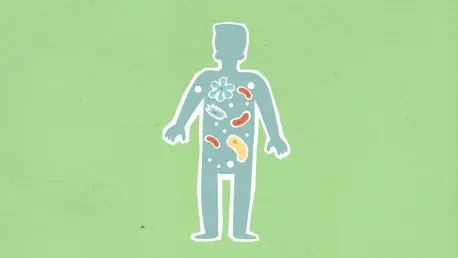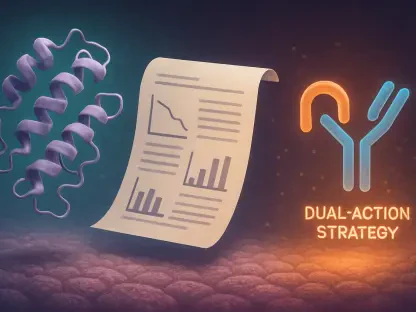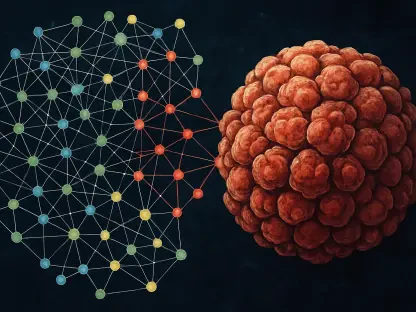Ivan Kairatov, a notable expert in biopharma with a rich background in tech and innovation within the industry, lends his insights on a recent groundbreaking study in human cell cycle regulation. The study, led by the team at EPFL, unveils how newly evolved genes are integral to the complex process of cell division in humans. With interdisciplinary roots in genomics and cell cycle biology, this research has created a detailed atlas of gene activity that is reshaping our understanding of transcription factors’ roles, particularly in the context of diseases like cancer.
Can you explain the primary goals and objectives of your study on human cell cycle regulation?
Our main goal was to gain insights into how recently evolved genes, specifically transcription factors, regulate the human cell cycle. Cell division is a fundamental process, and although its core principles originate from ancient bacteria, human cell division exhibits much higher sophistication. We aimed to uncover the roles of these newer genetic elements and how they might contribute to this complexity.
How did your interdisciplinary approach, combining cell cycle biology and genomics, enhance the outcomes of the research?
The interdisciplinary approach was crucial for success. Cell cycle biology allowed us to understand the mechanics and timing of cell division, while genomics provided a comprehensive view of gene activity throughout the cycle. By integrating these fields, we could confirm hypotheses, develop mathematical models, and leverage genomic analyses to generate a robust and detailed atlas of gene activity, significantly enhancing the depth and validity of our findings.
What were the roles of each team member in the project, and how did your collaboration contribute to the study’s success?
Our collaboration was essential. Romain Forey handled the wet lab experiments leveraging his expertise in cell cycle biology, and Cyril Pulver focused on genomics analyses. Alex Lederer played a critical role in analyzing CRISPRi data to accurately position cells within the cycle. These contributions redefined disciplinary boundaries since we all participated in key discussions and decisions, ensuring a seamless and comprehensive research process.
What is the significance of the atlas you created, and how can researchers access and utilize it?
The atlas is a groundbreaking resource that maps human cell cycle gene activity. It provides researchers worldwide with access to detailed data on gene expression and perturbation across cell division phases. This resource can be utilized to explore genetic functions in cell cycle regulation, aiding in various studies related to human health and diseases like cancer. Researchers can access it through scientific publications associated with our study.
Can you elaborate on the importance of transcription factors in the cell cycle, and what did your study reveal about their roles?
Transcription factors are pivotal in guiding cells through the different stages of the cell cycle. Our study revealed several transcription factors that emerged recently, playing key roles in timing and order within cell division. These factors regulate genes that are crucial during specific phases, ensuring that division is not only efficient but also finely tuned to the needs of human cells.
How do recently evolved transcription factors influence the timing and progression of cell division?
Recently evolved transcription factors control the activation and repression of genes during precise phases of the cell cycle. Their evolutionary novelty allows for adaptations unique to humans, fine-tuning the division process to match higher organism complexity, affecting timing and progression in ways that older genetic elements cannot.
What specific effects did you observe when key transcription factors were knocked down in the study?
When key transcription factors were knocked down, we observed that cells struggled to progress through certain stages of the cycle. This disruption indicated a loss in timing and proper sequence, causing cells to stall or perform divisions inefficiently, which underscores the indispensable role these transcription factors play in maintaining orderly cell division.
Could you discuss the role of the gene ZNF519 and its impact on DNA copying and cell growth?
ZNF519, a gene found uniquely in primates, was identified as having a crucial role in DNA replication. When it was disabled, cells faced challenges copying their DNA accurately, which is vital before division. As a consequence, cell growth was notably hindered, illustrating ZNF519’s essential role in ensuring smooth progression through the cell cycle.
How does ZNF519 function as a repressor, and what implications does this have on cell cycle regulation?
ZNF519 acts as a repressor by directly binding to the DNA of key cell cycle genes, modulating their activity. This repression is critical for maintaining a balance in gene expression necessary for precise cell cycle progression. It highlights the delicate regulation needed to prevent dysregulation, which can lead to conditions such as cancer.
What unique role does ZNF274 play in genome duplication and related processes, and how does it differ from older genetic elements?
ZNF274 influences the timing of specific genome segments duplication pre-mitosis, playing a role in maintaining the epigenome and 3D nuclear organization. Its presence in mammals (and absence in older vertebrates) suggests its evolved function is tailored for additional complexity found in these organisms, providing an unexpected layer of precision in genome replication.
How do your findings about transcription factors offer insights into understanding diseases like cancer?
Our findings provide a deeper understanding of transcription factors and their regulatory roles in cell division. The misregulation or mutation of these transcription factors can disrupt cell cycles, contributing to the unchecked cell proliferation seen in cancers. By pinpointing specific factors, we can target them for potential therapeutic interventions, aiding in cancer treatment.
What are the potential clinical or research applications of your study’s findings, particularly in relation to human-specific conditions?
These findings open doors to personalized medicine approaches, targeting specific transcription factors to control cell cycle regulation in human-specific diseases. It could lead to improvements in diagnostics and treatments for cancers and developmental disorders, leveraging the unique attributes of the human cell cycle for treatment strategies.
In what ways do your results help explain the prevalence or behavior differences of certain diseases in humans compared to other mammals?
Our results indicate that human-specific transcription factors are integral to the cell cycle. Their presence might explain why certain diseases are more prevalent or behave differently in humans. These factors can cause variations in gene expression that are peculiar to humans, potentially leading to distinct susceptibility or pathology in diseases.
What do you hope researchers worldwide will gain from your comprehensive resource on human cell cycle gene expression?
We hope this atlas serves as a cornerstone for future research, providing a detailed map of gene expression and guiding investigations into cell cycle-related processes. It can spark new insights into genetic regulation in health and disease, enabling researchers to navigate and explore the intricacies of the human cell cycle.
Are there any plans for follow-up studies or further research based on your findings?
Absolutely. We’re considering further studies to explore how other groups of recently evolved genes play roles in the cell cycle. Additionally, we’re interested in examining environmental influences on these transcription factors’ function and pursuing the clinical applications of our findings.
How do you envision your study impacting the fields of cell biology and genomics in the future?
We believe this study will drive future research in understanding how evolutionary advancements in genetic material influence cell biology. It could shift the paradigm in genomics, emphasizing the importance of newer genes and sparking innovation in how we approach both basic research and clinical practices.









